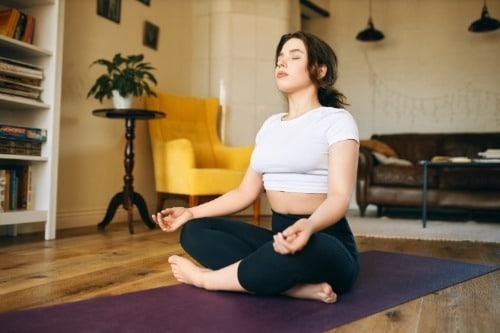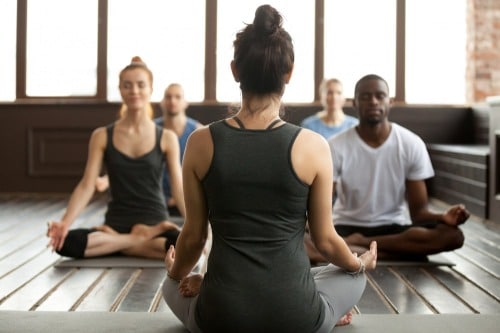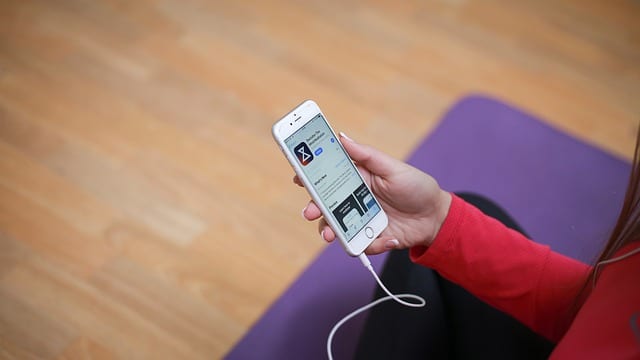What is meditation? Meditation is a simple and effective method for overall wellness, but it can be a challenge to get started. Whether you’re looking for a way to feel more energized, sleep better, or deal with stress, meditation can help. If you’re new to meditation, here are 19 tips on how to meditate for beginners that will help you keep meditating for a lifetime.

1. Go into your meditation practice without expectations
Be open to the experience of being in a meditative state, and not try too hard or push yourself too far. Allow for whatever arises during your session. Don’t judge what you are experiencing as good or bad – just let it be there. If something is happening that feels uncomfortable, don’t try to change it – simply notice it and return to your breathing.
2. Choose a time to meditate, and stick to it for a period of time
If you have trouble getting started in the morning, try meditating first thing when you wake up. If that doesn’t work for you, choose another time of day where you can be alone and undisturbed.
3. Meditate every day for periods of time
It may seem like a lot of extra work, but if you want to see results from your practice, then make sure you do it daily. It won’t take long before you start noticing changes in yourself.
4. Create your personal meditation space

If possible, create a special room for yourself where you can sit quietly and focus on your natural breath. This could be a corner of your bedroom, a quiet spot by the window, or even a spare bathroom if that works best for you.
5. Beginners should start small and take one step at a time
Start slow when first learning about mindfulness meditation. You don’t need to spend hours every single day sitting still doing nothing but breathe deeply. Try just 5 minutes at first, then work up from there.
6. Take a couple of moments to wind down and clear your mind before meditating
Before beginning your session, take some deep breaths and relax your muscles. This helps prepare yourself mentally and physically for what lies ahead.
7. Focus meditation on one thing at a time
If you are trying to achieve something during your practice, then don’t multitask! You might think this would lead to greater productivity, but research shows that when we’re distracted our ability to concentrate decreases.
8. Don’t judge yourself if you fall asleep
It happens to everyone sometimes.
9. Start experience with meditation with a few deep breaths to calm the body
Deep breathing helps relax the muscles throughout the entire body, which makes it easier to concentrate on what you are doing.
Start slow, taking about five seconds to inhale deeply through the nose, hold it there for three seconds, and exhaling slowly through the mouth. Repeat this process several times until you start feeling calmer.
10. Avoid fidgeting
A relaxation response can be triggered by taking a few deep breaths. It’s easy to lose track of where we are mentally if our minds wander off while trying concentration meditation. So, instead of moving around, just let yourself relax and breathe deeply. You don’t need to worry about what you’re doing physically because there isn’t anything else going on. Just focus on being present in the moment.
11. Just focus on your breath

If you experience physical discomfort while practicing mindfulness meditation, don’t worry about trying to ignore it. Instead, just notice what is happening inside your body, without judging yourself for feeling uncomfortable. You can even use this momentary discomfort to remind yourself how good it feels to relax.
12. Don’t force anything
Meditating doesn’t need to happen perfectly every single time. If you struggle to get started, don’t beat yourself up over it.
13. Be kind to yourself some days will be easier than others
If you’ve been struggling to meditate consistently, don’t beat yourself up if things aren’t going well every day. Some people struggle to get started because they think they need to do everything perfectly the first time around. But remember, just like any skill, practicing meditation takes time. So permit yourself to mess up sometimes—and know that there will always be another chance to improve!
14. Don’t worry about how long you spend doing each meditation session

If you have trouble meditating for a long time, you don’t have to feel as though you have to limit the hours you spend doing it. No rule says you have to sit there for an hour or two every day. You can do shorter sessions if they are more effective for you. If you find yourself getting distracted after only 10 minutes of sitting down, then try to practice for 5 minutes and increase the length of your practice by 5-10 minutes at a time until you reach 30 minutes.
You should be able to get into a comfortable meditation posture where you’re not too uncomfortable but also aren’t lying in bed either. It’s important to make sure that you’re relaxed enough so that you won’t fall asleep during your meditation session. This will help ensure that you’ll achieve some benefits from practicing this type of exercise.
15. Pick a simple technique for your daily meditation practice

There are various types of meditation and meditation techniques for beginners for your regular meditation practice:
Mindfulness meditation — This type focuses on being aware of what’s happening right now without judging yourself or others. You will learn about mindfulness through guided exercises that help you understand its benefits.
Sound baths – a type of meditation practice that involves the use of various sound frequencies and vibrations to promote relaxation and mental clarity. During a sound bath, participants lie down or sit comfortably while a facilitator plays instruments such as high-quality singing bowls, gongs, chimes, or other percussion instruments, generating sounds that resonate throughout the room.
Breath-focused meditation – Mindful breathing deeply while focusing on one thing calms down the mind and relaxes the whole body. Breath awareness becomes more important than anything else when doing breathing exercises.
Guided relaxation – Guided relaxation involves listening to soothing music with instructions from someone who guides you through deep breathing and muscle relaxation.
Scan meditation is a type of guided meditation where you focus on a single object. The object could be anything – a candle flame, a flower, a tree, a star, a body scan, etc. You simply sit there, close your eyes and focus on whatever object you choose. Whenever you start thinking about something else, you bring your attention back to the object. Yoga –
Yoga – Yoga combines physical movement with mental focus. It includes postures like standing poses, twists, forward bends, backbends, balancing poses, sun salutations, hip openers, and other movements. These light yoga moves improve flexibility, strength, and balance. They also calm the nervous system by releasing tension throughout the entire body.
Qigong/Tai Chi Chuan – Qigong is a Chinese martial art that uses slow, gentle movements to promote health and longevity.
Walking Meditation – this is a way to clear your mind and relax your body. It helps you to focus on your breathing and allows you to become aware of your surroundings. It is a great way to get fit and stay healthy. 5-minute walking medication can help you to reduce stress and anxiety and improve your mood.
16. Pick a good yoga coach or meditation coach

Having a yoga coach or meditation coach is also important. It’s like having an expert in your life who can help you with the practice of yoga and meditation because it takes time to learn this art form. You need someone who has been practicing these kinds of meditation techniques for years so that they know what works best for them.
A good teacher will be able to guide you through all aspects of learning about yourself, including self-awareness, mindfulness, concentration, breathing exercises, relaxation, etc. They should also have experience teaching others as well. If you are looking for a yoga coach or meditation coach, make sure that he/she has at least 5+ years of training under their belt.
17. Use meditation apps

I use meditation apps, which are free and have guided sessions that you can listen to at your own pace. It’s very easy to get into it.
Some apps have specific goals like reducing stress, improving sleep quality, etc., whereas others offer general relaxation tools. Apps range from free to paid. There are also some hybrid options where you pay only once but get access to all features forever.
You don’t need any special equipment or anything like that. You just sit down in a comfortable position with no distractions around you. If there are noises outside, then put some headphones over your ears so that they block out everything else but what you’re listening to.
The idea is not to think about anything other than whatever thoughts come up during the session. Just let them pass through without getting caught up in them. This takes practice though. So, if you find yourself thinking too much while doing this, try focusing more on breathing instead. Inhale when you feel calm and exhale when you start feeling anxious. Try to do this every time you meditate. Eventually, you’ll be able to focus solely on your breath as opposed to all these random thoughts running through your head. That will help you relax even further.
18. Pick the music styles that suit you
Background music/sound can help with concentration by providing an anchor point that helps one remain focused during meditation. Meditation is often accompanied by breathing exercises such as deep-breathing or abdominal breathing, which are used to slow down thoughts and relax the mind. The use of these breathing techniques will allow the user to concentrate more effectively while practicing meditation. In addition, it has been shown that listening to calming music reduces anxiety and stress levels.
19. Meditation is like your personal oasis. Let it be a part of your daily routine in daily life
For those who daily practice meditation is like having a peaceful place where you can be alone to think about all the problems that you have in your everyday life. This may include problems such as work problems, family problems, school problems, and many other issues that may bother you. All you need to do is to make meditation a part of your daily routine, and you will be able to feel better in all aspects of your life.
Key takeaway
Meditation is something that everyone needs to learn because there are many benefits of meditation. It benefits us mentally and physically. When we meditate regularly, our brain releases endorphins into our body making us happy. Endorphins are chemicals produced naturally within the human body that give people feelings of happiness and well-being. They are released whenever someone experiences pleasure or pain.


